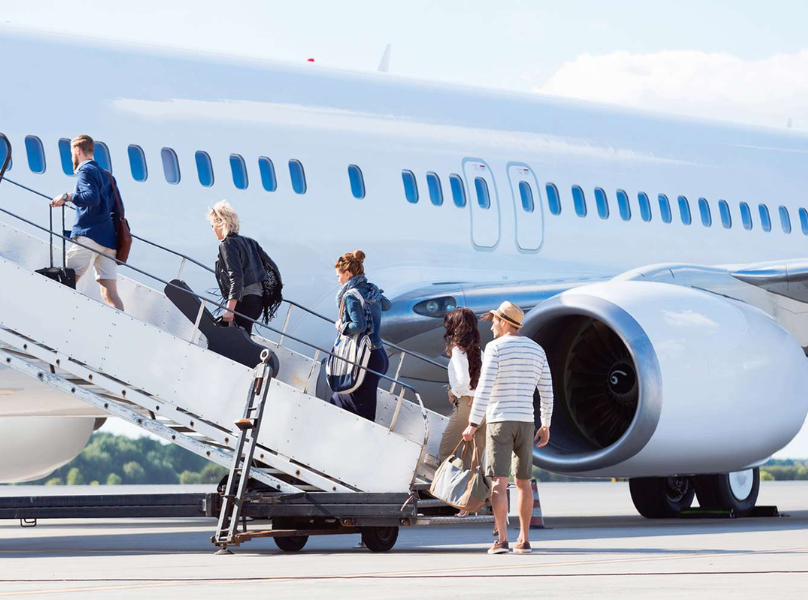Why Do Planes Board So Early? | Outdoor Hues
Boarding feels unnecessarily early, until you understand why. Here’s what’s really going on behind the scenes.

You’ve cleared security, grabbed a coffee, and reached your gate early, only to hear the dreaded announcement: “We’ll begin boarding shortly.” Except “shortly” turns into 45 minutes before takeoff. And once you're on the plane? You sit there. And sit. And sit.
If you’ve ever wondered, why do planes board so early? you’re not alone. It feels like a drawn-out process, especially when you're packed in a narrow aisle waiting for everyone to sort out their overhead bags. But there’s a reason for the early call. Actually, there are several.
From critical safety procedures to complicated logistics behind the scenes, boarding a plane involves a lot more than just getting everyone in their seats. Understanding why boarding starts early helps you avoid frustration and maybe even miss fewer flights.
Aircraft Prep and Safety Checks
The minute one group of passengers deplanes, a carefully choreographed routine begins behind the scenes. Before a single passenger can step onboard again, the aircraft must be prepared, inside and out.
Cabin Reset and Cleaning
Once the last passenger exits, cleaning crews jump in to reset the cabin. This isn’t just about picking up napkins and wiping tray tables. Seats are checked, restrooms are sanitised, and emergency equipment is inspected. If the plane’s been flying for several legs, this process can take longer.
Security and Safety Inspections
Every aircraft must undergo standard pre-flight safety checks. These include checking oxygen levels, emergency lights, seat belts, and doors. Ground staff and crew ensure everything complies with regulations before boarding begins.
If even one of these checks fails, it can delay departure or result in a last-minute aircraft swap. That’s why boarding starts early because everything needs to be confirmed safe before you even step onto the plane.
Passenger Logistics and Movement
It’s easy to forget, but boarding isn’t as simple as filing into a theatre. The crew is managing hundreds of people with different needs, ticket types, and boarding priorities, all while the clock is ticking.
Seat Arrangements and Zone Boarding
The boarding process is designed to avoid clogging the aisles and to load the aircraft efficiently. But that’s easier said than done.
-
Families with small children may need extra time.
-
Passengers in wheelchairs or with mobility needs board early and may need assistance.
-
Overhead bin space runs out quickly, and resolving luggage reshuffling takes time.
This staggered boarding process helps avoid chaos but adds minutes, especially if passengers don’t follow the order or carry too much on board.
Why It’s Not a Free-for-All
People boarding in the wrong zone, oversized carry-ons, and last-minute seat swaps are all normal but time-consuming. The airline allows extra time before departure to absorb these hiccups without delaying the schedule.
If you’re wondering how early do planes start boarding, the answer typically ranges from 30 to 50 minutes before takeoff, depending on aircraft size and destination.
Why Boarding Early Prevents Delays
The Turnaround Window Is Tight
Airlines run on precision. The “turnaround time”, the window from landing to takeoff, is short. Every minute a plane sits at the gate costs money.
If boarding starts late and passengers drag their feet (literally or figuratively), the entire schedule is thrown off. That leads to missed connections, tighter windows at landing airports, and delays for the next flight using that same aircraft.
Bigger Planes Take Longer
A full Boeing 777 or Airbus A380 can carry 300+ passengers. Getting that many people seated, stowed, and buckled takes time.
And since boarding must finish before the safety demo, door closing, and final paperwork, airlines start the process early to avoid last-minute stress.
Boarding Delays Ripple Across the Day
If you’re asking how early do they start boarding planes, think of it like a domino effect. A late boarding leads to a late takeoff, which leads to missed airport slots, longer taxi times, and backups across the schedule. Early boarding is an insurance policy against that ripple effect.
Before Boarding: What You Actually Need to Get Onboard
To avoid holding up the line or adding to your own stress, be ready with what you’ll need before boarding begins:
Valid Identification
Domestic flights require a government-issued photo ID. For international flights, you'll need a passport and in many cases, a visa or vaccination certificate.
Boarding Pass (Physical or Digital)
Your boarding pass will be scanned before you walk down the jet bridge. Having it ready on your phone or printed saves time.
Gate-Ready Items
Keep headphones, chargers, books, snacks, and medication in your personal item, not in the carry-on you’ll place in the overhead bin. Standing in the aisle digging through your bag causes delays and frustrated stares.
If you’ve ever found yourself asking what do you need to board a plane, it’s these three: ID, boarding pass, and carry-on organisation.
It might feel like overkill when the airline starts calling boarding groups 45 minutes before your flight. But once you understand how early planes board and why it matters, it makes perfect sense. From cleaning and inspections to helping passengers with special needs and dodging ripple-effect delays, early boarding is the unsung hero of on-time flights.
So next time you see people lining up before their group is called, or you feel annoyed boarding has started before the last flight even left the gate, remember: it’s not just about herding people. It’s about operational flow, passenger comfort, and avoiding a travel-day meltdown.
Follow Outdoor Hues for expert travel breakdowns and smart flying tips that take the guesswork out of your journey.